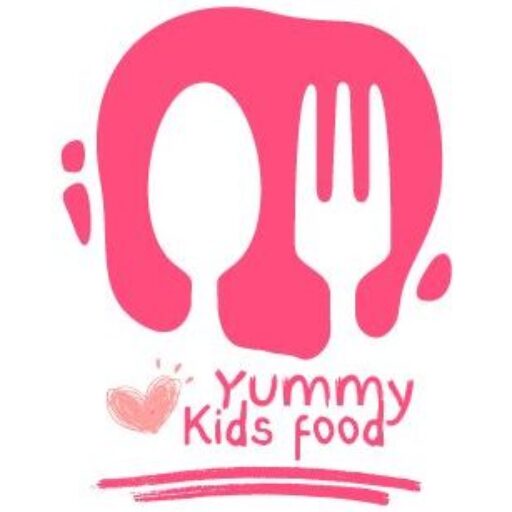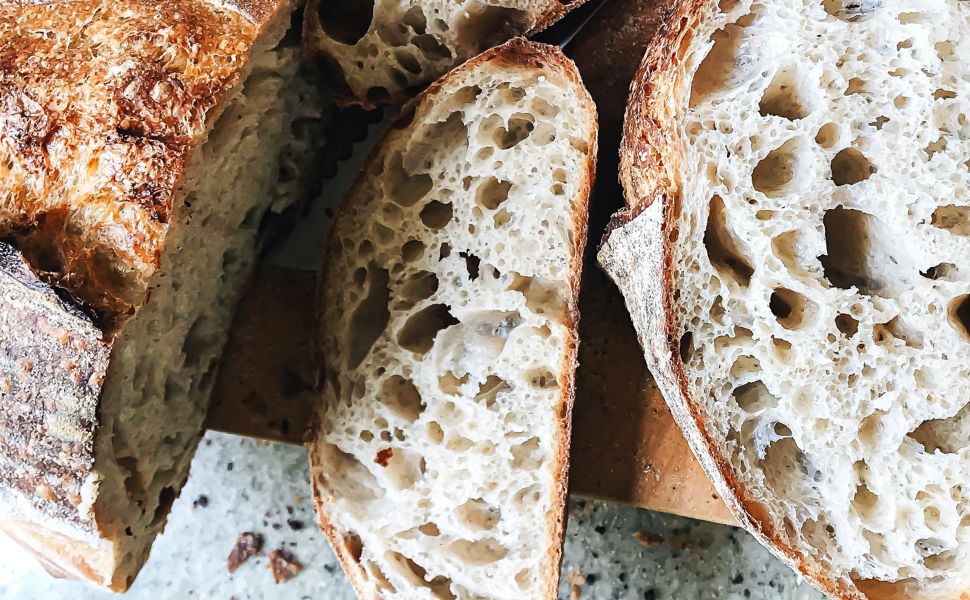This easy no knead whole wheat flax baby bread recipe is a delightful option for those who want to incorporate healthier ingredients into their daily bread consumption. Enjoy it with your favorite spreads, use it for sandwiches, or savor it on its own. The possibilities are endless with this homemade treat. baby
Baking homemade bread for babies under 1 is a rewarding and fulfilling experience, but it can be time-consuming and intimidating for beginners. Thankfully, there’s a solution that combines simplicity, healthiness, and deliciousness: the easy no knead whole wheat flax bread recipe.
Table of Contents
- Why Whole Wheat and Flax?
- What you need for baby bread recipe?
- Instructions to bake no knead whole wheat flax bread

Why Whole Wheat and Flax?
Whole wheat flour and flax seeds are nutritious powerhouses that elevate this baby bread to a healthier level. Whole wheat flour contains the bran, germ, and endosperm, offering more fiber, vitamins, and minerals compared to refined flour. Flax seeds, on the other hand, are an excellent source of omega-3 fatty acids, lignans, and fiber, adding heart-healthy benefits and a delightful nutty flavor to the baby bread recipe.
What you need for baby bread recipe?
- 1 ½ cups whole wheat flour
- ½ cup all-purpose flour (for lightness)
- ¼ cup ground flax seed
- 1 teaspoon active dry yeast
- 1 teaspoon salt
- 1 ¼ cups warm water (around 110°F or 45°C)
- 1 tablespoon honey or maple syrup (for sweetness and yeast activation)

Instructions to bake no knead whole wheat flax bread
Here are simple steps to make this healthy baby bread recipe:
- In a large mixing bowl, combine the whole wheat flour, all-purpose flour, ground flax seed, active dry yeast, and salt. Mix well with a whisk or a fork to ensure even distribution of the ingredients.
- Create a well in the center of the dry ingredients and pour in the warm water and honey/maple syrup. The warm water helps activate the yeast, while the sweetener provides food for the yeast to thrive. Stir the mixture gently until all the ingredients are incorporated and a shaggy dough forms.
- Cover the bowl with plastic wrap or a damp cloth, and let the dough rest for 12 to 18 hours at room temperature. During this time, the magic of fermentation occurs, developing the bread’s flavor and texture without the need for kneading.
- After the long rest, the dough will have risen and be slightly bubbly. Generously flour a clean surface and turn the dough out onto it. Gently shape the dough into a ball by folding the edges toward the center. The dough will be sticky, but resist the temptation to add excessive flour, as this can toughen the bread.
- Place the dough seam-side down on a parchment paper-lined baking sheet. Cover it with a damp cloth and let it rise for an additional 1 to 2 hours. The dough should increase in size during this time.
- Preheat your oven to 450°F (230°C) about 30 minutes before the second rise is complete. Place an empty, oven-safe container, such as a cast-iron pan or a metal tray, on the oven’s lower rack. This will create steam during baking, resulting in a crusty exterior.
- When the second rise is complete, make shallow slashes on the top of the bread with a sharp knife. This helps the bread expand during baking. Slide the parchment paper and dough onto a baking stone or the center rack of the oven. Pour about 1 cup of hot water into the hot pan/tray on the lower rack to create steam. Quickly close the oven door to trap the steam.
- Bake the baby bread for about 25-30 minutes or until it develops a golden-brown crust. The internal temperature should read around 200°F (93°C) when done. Remove the bread from the oven and let it cool on a wire rack for at least 1 hour before slicing.
Other healthy recipes for baby
- Healthy banana bread for baby – No salt or sugar added
- BLW Pesto flatbread recipe
- Baby blueberry muffins
- Healthy Veggie muffins
- BLW banana muffins
FAQs – Bread for babies under 1
Which bread is best for babies?
When introducing bread to babies, it’s essential to choose the right type of bread for babies under 1 that is safe, nutritious, and age-appropriate. Here are some bread options that are generally considered suitable for babies:
- Whole Wheat Bread: Whole wheat bread made from 100% whole grain flour is an excellent choice for babies. It is a good source of fiber, vitamins, and minerals, providing essential nutrients for their growth and development.
- Multigrain Bread: Bread made with a mix of whole grains like oats, barley, quinoa, and millet can add variety to your baby’s diet while offering a range of nutrients.
- Whole Grain Rye Bread: Rye bread contains nutrients like iron, magnesium, and B-vitamins. It has a distinct flavor and texture that some babies may enjoy.
- Sprouted Grain Bread: Sprouted grain bread is made from grains that have started to germinate, which can enhance nutrient absorption and digestibility.
- Homemade Bread: Making your own bread at home allows you to control the ingredients, including reducing added sugar and salt, which is beneficial for your baby’s health.
It’s essential to check the ingredients list when buying bread for babies. Avoid bread with added sugars, artificial additives, or excessive salt, as these are not suitable for babies’ delicate digestive systems.
When introducing bread to your baby’s diet, follow these tips:
- Age-appropriate: Most babies can begin eating small pieces of soft, well-cooked bread around 6-8 months of age, after they have started with solid foods and can handle texture.
- Soft Texture: For young babies, ensure the bread is soft and easy to chew or mash with their gums. You can cut it into small, bite-sized pieces or spread soft toppings like avocado or mashed bananas on it.
- Watch for Allergies: Introduce bread for babies under 1 gradually and monitor your baby for any signs of allergies or sensitivities. If there’s a family history of wheat or gluten allergies, consult a pediatrician before introducing bread.
- Nut Butters: If you want to introduce nut butters (e.g., peanut or almond butter) on bread, do so after checking for nut allergies and diluting the nut butter with water or breast milk to reduce the risk of choking.
- Avoid White Bread: Highly processed white bread lacks the nutritional benefits of whole grains and may be less filling for your baby.

What kind of bread is good for 6 month old baby?
At around 6 months of age, many babies are ready to start exploring solid foods alongside breast milk or formula. When introducing baby bread recipe to a 6-month-old baby, it’s essential to choose safe and appropriate options. Here are some suitable bread options for a 6-month-old baby:
- Plain Whole Wheat Bread: Opt for plain whole wheat bread made from 100% whole grain flour without added sugars or salt. Whole wheat bread provides essential nutrients and fiber for your baby’s growth and development.
- Soft Homemade Bread: If you’re comfortable baking at home, consider making a soft, homemade bread using whole wheat flour and minimal ingredients. This way, you can control the level of sweetness and salt content.
- Baby Cereal Bread: Some commercial baby cereals offer bread options suitable for 6-month-olds. Look for baby cereals made from whole grains like rice, oats, or barley, as these can be turned into soft bread by adding water or breast milk and mashing them into a dough-like consistency.
- Rice Cakes or Rice Bread: Rice cakes or rice bread can be a good alternative for babies who have gluten sensitivity or wheat allergies. Ensure they are soft and easy to dissolve in the baby’s mouth.
Before introducing baby bread recipe or any new food to your 6-month-old baby, consider the following tips:
- Start Gradually: Introduce one new food at a time, waiting a few days before introducing another. This approach helps you identify any potential allergies or sensitivities.
- Watch for Allergic Reactions: Pay close attention to your baby’s reaction to the bread. If you notice any signs of an allergic reaction, such as rash, diarrhea, or difficulty breathing, stop giving the bread, and consult a pediatrician.
- Texture Matters: At 6 months, babies are likely to have limited chewing abilities. Ensure that the bread is soft and easy for your baby to gum or dissolve in their mouth to avoid choking hazards.
- Avoid Added Sugar and Salt: Choose bread with no added sugars or salt. Babies under one year old should not have added sugars or high salt intake.
- Offer Variety: While introducing bread, continue to offer a variety of other foods to ensure a balanced diet.
- Consult a Pediatrician: If you have any concerns or questions about introducing bread to your baby’s diet, consult your pediatrician for personalized guidance.
Remember that breast milk or formula remains the primary source of nutrition for babies at 6 months old, and solid foods are introduced gradually to complement their milk feeds. The introduction of solid foods should be a gradual and enjoyable experience for both you and your baby.
How to make bread for 6 month old?
Making bread suitable for a 6-month-old baby requires a soft and easy-to-dissolve texture to ensure safe consumption. Here’s a simple recipe for homemade baby bread using baby cereal:
Ingredients:
- 1/2 cup baby cereal (rice, oatmeal, or barley)
- Water or breast milk (for mixing)
Instructions:
- Preparation: Choose a baby cereal made from whole grains like rice, oatmeal, or barley. Avoid varieties with added sugars or salt.
- Mixing the Dough: In a small bowl, add 1/2 cup of the chosen baby cereal. Slowly add water or breast milk, a little at a time, and mix until you achieve a soft, dough-like consistency. The goal is to create a sticky dough that can be shaped.
- Shaping the Bread: Once you have the dough ready, you can shape it into small pieces or rolls. For ease of handling, lightly grease your hands with vegetable oil or coconut oil.
- Baking (Optional): This baby bread doesn’t require baking since it’s made with baby cereal, which is already cooked and safe for consumption. However, if you prefer a slightly firmer texture, you can place the shaped pieces on a baking sheet lined with parchment paper and bake in a preheated oven at 350°F (175°C) for about 5-7 minutes. Keep a close eye on them to prevent overcooking.
- Cooling: Allow the baby bread to cool before serving to your little one.
- Serving: Offer small, soft pieces of the baby bread to your 6-month-old. Make sure the pieces are small enough for your baby to easily pick up and dissolve in their mouth to avoid choking hazards.
- Storage: Store any unused baby bread in an airtight container in the refrigerator. It’s best to use it within a day or two.
Important Tips:
- Always supervise your baby while they are eating, especially when introducing new foods.
- If your baby has not yet started solid foods or is not accustomed to eating solids, consult your pediatrician before introducing bread or any new food.
- As your baby gets older and more experienced with solids, you can start introducing softer, homemade bread made with whole wheat flour, as mentioned in the previous response. Remember to provide age-appropriate textures and always prioritize your baby’s safety and nutrition.
- Remember that breast milk or formula should still be the primary source of nutrition for your 6-month-old, and solid foods are introduced gradually to complement their milk feeds.
How to give bread to baby?
Introducing baby bread recipe to your baby can be an exciting milestone, but it’s essential to do it safely and in an age-appropriate manner. Here’s a step-by-step guide on how to give bread for babies under 1:
- Wait for the Right Time: Before introducing bread, ensure that your baby is around 6 months old and has already started eating solid foods. At this age, babies can sit up with support and have good head control, which are signs of readiness for solids.
- Choose the Right Bread: Opt for soft and easy-to-dissolve bread options suitable for babies. Homemade baby bread made from baby cereal or commercially available bread made from whole grains without added sugars or salt are good choices.
- Cut into Small Pieces: If you’re using a soft, homemade baby bread, cut it into small, bite-sized pieces that are easy for your baby to handle and chew. For store-bought bread, you can tear it into small, manageable pieces.
- Consider Texture: At 6 months old, babies may not have full chewing capabilities. Ensure that the bread is soft and easy to gum or dissolve in their mouth to avoid choking hazards.
- Start Slowly: Offer a small piece of bread to your baby and observe how they respond. Babies may need time to get used to new tastes and textures, so be patient if they don’t show immediate interest.
- Use Soft Spreads: If you want to add flavor or moisture to the bread, consider using soft spreads like mashed avocado, mashed bananas, or unsalted nut butter (e.g., peanut or almond butter) diluted with water or breast milk. Always check for potential allergies before introducing new spreads.
- Supervise the Feeding: Always be present and closely supervise your baby while they are eating bread or any new food. This ensures their safety and allows you to address any choking risks immediately.
- Avoid Sweetened or Salted Breads: Keep in mind that babies under one year old should not have added sugars or high salt intake. Avoid bread with added sugars or excessive salt content.
- Observe for Allergies: Watch for any signs of allergic reactions after introducing bread. If you notice any adverse reactions, such as rash, diarrhea, or difficulty breathing, stop giving the bread and consult a pediatrician.
- Balance with Breast Milk or Formula: Remember that breast milk or formula remains the primary source of nutrition for your baby at 6 months old. Solid foods, including bread, are introduced gradually to complement their milk feeds.
- Introduce Variety: As your baby becomes more comfortable with bread, you can start offering different types of bread, including whole wheat or multigrain options, to add variety to their diet.

